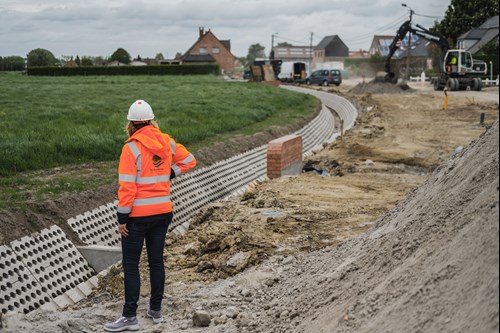Benefits
Benefits for local authorities
Entering into a partnership with Riopact offers a range of benefits to municipalities. For example, they can rely on the combined expertise of Aquafin and De Watergroep. On top of that, the contributions for capturing and transporting waste water are only used in the municipality where they originate.

“When local authorities choose to work with Riopact, they can expect to see a whole range of benefits”, Head of Riopact Simon Stevens explains.
Benefits
- The municipal connection has already been established. “We exclusively contact local authorities within our drinking water area. As a result, we’re usually already familiar with the situation and the people in these towns. This connection forms a sound basis for broader cooperation.”
- The combined expertise of Aquafin and De Watergroep is a major advantage. “De Watergroep has an extensive network at its disposal and possesses the expertise needed to ensure the financial side of municipal waste water disposal make sense. Aquafin is the perfect partner due to its many years of technical expertise in the area of sewer construction and management. In addition, our partnership means it is much easier for us to connect local sewers to supra-municipal sewer projects.”
- The income from sewers flows back to the municipal sewer system. “The municipal contribution for waste water disposal forms part of the drinking water bill we send to our customers. The income we generate this way is redeployed within the same municipality. That particular feature of the Riopact model has persuaded a lot of municipalities to join us.”
Peace of mind
A partnership with Riopact can also provide benefits in other areas. For example, Riopact offers financial support for sewer projects if municipal funds fall short. “High-priority sewer projects can be completed without subsidies, and our accounts are always transparent and specific to each municipality”, Simon Stevens says. “The fulfilment of the treatment obligation imposed by the Flemish Government is another thing we can take over from municipal authorities. We're doing everything we can to provide local authorities with peace of mind.”
